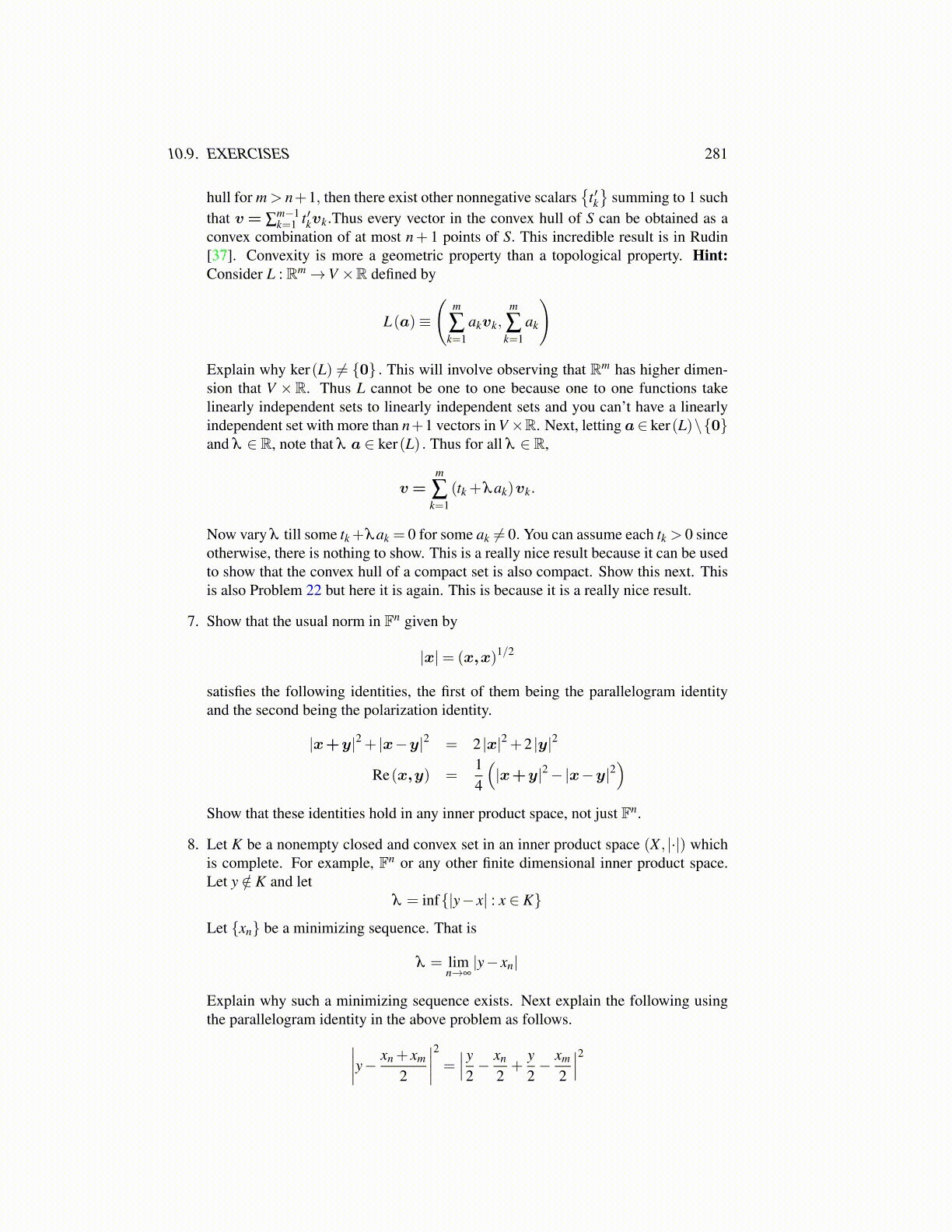
10.9. EXERCISES 281
hull for m > n+1, then there exist other nonnegative scalars{
t ′k}
summing to 1 suchthat v = ∑
m−1k=1 t ′kvk.Thus every vector in the convex hull of S can be obtained as a
convex combination of at most n+ 1 points of S. This incredible result is in Rudin[37]. Convexity is more a geometric property than a topological property. Hint:Consider L : Rm→V ×R defined by
L(a)≡
(m
∑k=1
akvk,m
∑k=1
ak
)
Explain why ker(L) ̸= {0} . This will involve observing that Rm has higher dimen-sion that V ×R. Thus L cannot be one to one because one to one functions takelinearly independent sets to linearly independent sets and you can’t have a linearlyindependent set with more than n+1 vectors in V×R. Next, letting a∈ ker(L)\{0}and λ ∈ R, note that λ a ∈ ker(L) . Thus for all λ ∈ R,
v =m
∑k=1
(tk +λak)vk.
Now vary λ till some tk+λak = 0 for some ak ̸= 0. You can assume each tk > 0 sinceotherwise, there is nothing to show. This is a really nice result because it can be usedto show that the convex hull of a compact set is also compact. Show this next. Thisis also Problem 22 but here it is again. This is because it is a really nice result.
7. Show that the usual norm in Fn given by
|x|= (x,x)1/2
satisfies the following identities, the first of them being the parallelogram identityand the second being the polarization identity.
|x+y|2 + |x−y|2 = 2 |x|2 +2 |y|2
Re(x,y) =14
(|x+y|2−|x−y|2
)Show that these identities hold in any inner product space, not just Fn.
8. Let K be a nonempty closed and convex set in an inner product space (X , |·|) whichis complete. For example, Fn or any other finite dimensional inner product space.Let y /∈ K and let
λ = inf{|y− x| : x ∈ K}
Let {xn} be a minimizing sequence. That is
λ = limn→∞|y− xn|
Explain why such a minimizing sequence exists. Next explain the following usingthe parallelogram identity in the above problem as follows.∣∣∣∣y− xn + xm
2
∣∣∣∣2 = ∣∣∣ y2 − xn
2+
y2− xm
2
∣∣∣2